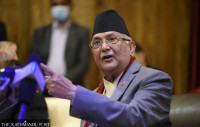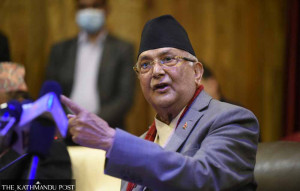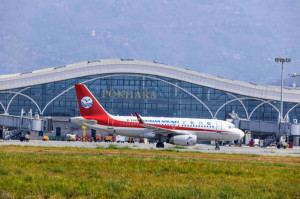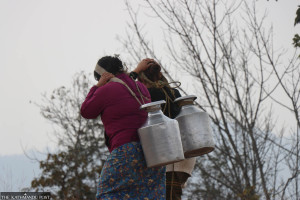Editorial
Everest rules
A new bill proposes much-needed reforms of rules governing climbing and cleaning up the mountain.
The 8,848.86 metre Mt. Everest tempts many ardent climbers. As of now, nearly 9,000 mountaineers have made it to the summit from the Nepal side since Tenzing Norgay Sherpa and Edmund Hillary first summited Everest in 1953. This spring alone, over 400 enthusiasts have taken permission for the Everest climbing adventure, and the number will likely increase to at least 500. Add guides, and the total number could surpass 1,000. Such high numbers, no matter how beneficial for Nepal’s economy, have a darker side: unusual traffic jams, an increase in the deaths of climbers (for instance, 17 deaths in 2023 and eight in 2024), rapid glacier melt and the spreading image of Everest as the “world’s highest garbage dump”.
In a bid to solve these problems, the Supreme Court issued a mandamus order last year, directing the authorities to regulate the growing number of expeditions on the mountain. Following this, the Department of Tourism recently registered the Integrated Tourism Bill in the upper house of Parliament. Under the proposed law, climbers aspiring to scale Everest must first have experience of climbing a peak above 7,000 metres. This provision has been necessary because in recent years, many novice climbers have had a shot at Everest, which not only risks their lives but also those of Sherpas. Concomitantly, the bill aims to improve garbage management amid growing calls for cleaning the region, and to mandate the department to shoulder the responsibility.
Additionally, health checkups issued within the previous month from a government-approved health institution will be mandatory, and those without sound health will be barred from climbing. Due to high costs in retrieving dead bodies, they are stranded at the infamous Death Zone, above 8,000 metres. So the bill proposes insurance coverage which will also include dead body management, besides the existing one that covers accidents, health and search and rescue. Other proposed reforms include the provision that search and rescue be carried out only by travel companies, robust penalties for rule violators and the protection of the jobs of Sherpas.
This is not the first time the Nepali government has tried to manage Everest expeditions. In 1995-96 too, ascending Everest required prior experience of summiting a 6000-metre peak; however, the rule didn’t endure, as the expeditions decreased. Under pressure of mountaineers and stakeholders, the government reversed the decision. The bill still doesn’t address the practice of climbers having to personally fund the liaison officers—government officials who oversee expeditions—which reeks of institutional bribery. And death knows no altitude, be it 6,000 or 7,000 metres.
Still, the bill tries to establish a foundation for safer mountaineering, bring order and make people accountable. This is commendable as Everest is not an easy adventure; it requires patience, rigorous acclimatisation, great commitment, careful preparation and logistical support. If scaling it were as easy as it is alluring, anyone would have made it to its top. This is also a significant step towards saving Everest, which has long been enduring adverse ecological effects—evident in the melting of the Khumbu Glacier, affecting the region and the lives of people living downstream.
The Nepali state and business folks have often seen Everest as a cash cow and exploited it without any regard for preservation and human casualties. Time has come to strike a proper balance between what humans want and what Everest can handle.




 9.12°C Kathmandu
9.12°C Kathmandu














